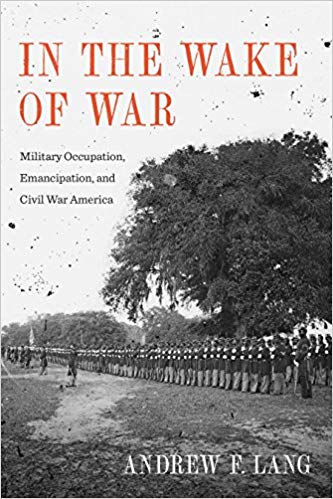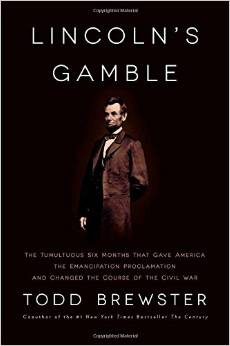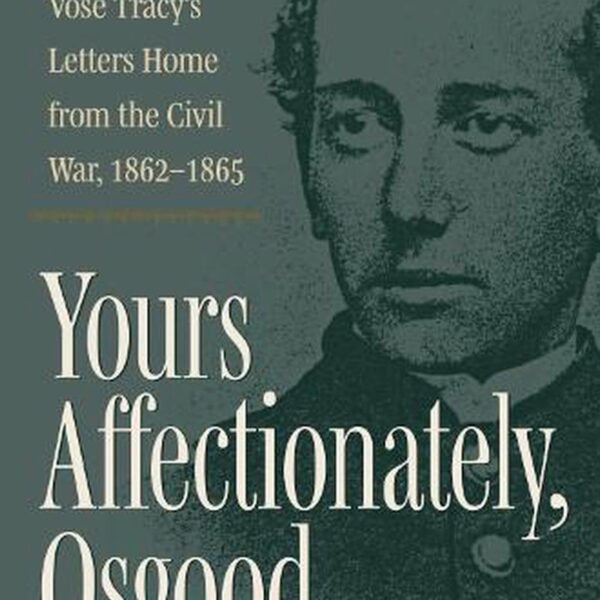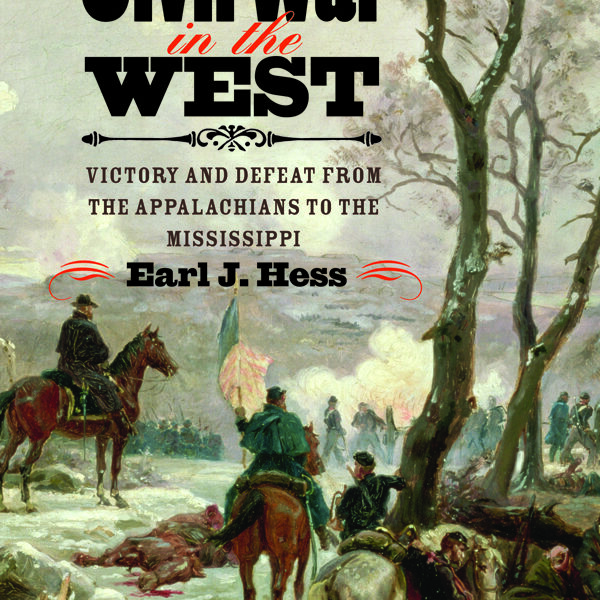In The Wake of War: Military Occupation, Emancipation, and Civil War America by Andrew F. Lang. Louisiana State University Press, 2017. Cloth, ISBN: 978-0807167069. $47.50.
 Americans today are seemingly unconcerned about standing armies or military occupations. With nearly 800 military bases overseas and over two million military personnel, the United States is perpetually ready for or actively engaged in war.[1]And it has been this way for a long time. Over the last century, the U.S. military has occupied or has been deployed in various countries—often for decades—in places such as the Philippines, (West) Germany, South Korea, and Afghanistan. While long occupations and an extensive military apparatus have become commonplace in post-World War II America, there was a time when standing armies and occupying forces were deeply unpopular. Andrew F. Lang, in his stimulating book In the Wake of War, argues that mid-nineteenth century Americans were deeply ambivalent about occupations. Lang examines three occupations: Mexico, the Confederacy, and the postwar South. His research into the experiences of soldiers adds much to our understanding of the Civil War, but the book falters in its treatment of Reconstruction.
Americans today are seemingly unconcerned about standing armies or military occupations. With nearly 800 military bases overseas and over two million military personnel, the United States is perpetually ready for or actively engaged in war.[1]And it has been this way for a long time. Over the last century, the U.S. military has occupied or has been deployed in various countries—often for decades—in places such as the Philippines, (West) Germany, South Korea, and Afghanistan. While long occupations and an extensive military apparatus have become commonplace in post-World War II America, there was a time when standing armies and occupying forces were deeply unpopular. Andrew F. Lang, in his stimulating book In the Wake of War, argues that mid-nineteenth century Americans were deeply ambivalent about occupations. Lang examines three occupations: Mexico, the Confederacy, and the postwar South. His research into the experiences of soldiers adds much to our understanding of the Civil War, but the book falters in its treatment of Reconstruction.
Lang begins with the Mexican-American War to demonstrate the longstanding reservations among civilians towards professional armies and occupying powers. White volunteers made up the majority of the army that invaded Mexico, and these citizen-soldiers entered the conflict imbued with republican notions of citizenship. They saw themselves as “an antithesis to monarchy and oligarchy” (3). But their ideals quickly came into conflict with the realities of war. Citizen-soldiers expected to be engaged in battle or on the march to battle; instead, most of these volunteers never participated in combat. They garrisoned towns, guarded supply lines, and policed locals. They were stuck in place and part of a larger bureaucratic enterprise of control and subordination. As occupiers, they chafed at the boredom of garrison life and lashed out at local Mexicans.
The tensions produced by the Mexican-American War over occupation reemerged during the Civil War. Indeed, the problems intensified as occupation and garrisoning became central components of Union military strategy. In the first two years, Union soldiers, similar to their counterparts in occupied Mexico, grew uncomfortable with garrison duty. As they quickly recognized, occupying armies are forces of social instability. They weaken the social order and make corruption more likely. Some soldiers and officers used their time stationed in barracks to participate in illicit trade with locals. Those that followed orders nevertheless grew weary from the insults lobbed at them from white southern women. Others became anxious when newly freedpeople asserted their rights in public. Still others grew alarmed at guerilla attacks and especially the way that soldiers retaliated with minimal restraint against the enemy. As a result, most citizen-soldiers hoped to be transferred to the Army of the Potomac, where regular engagement with the Confederate army better conformed to their ideals of service.
The disdain for occupation duty among white soldiers prompted the Lincoln administration to prioritize the use African American soldiers in garrison duty. As historians have noted, Lincoln opened up the military to black enlistment in the Emancipation Proclamation, but Lang focuses on the role that Lincoln designated for those suitable for military service: “to garrison forts, positions, stations, and other places.” This, Lang contends, ensured that black men would be treated as second-class citizens. Not only was occupation duty undesirable for white soldiers, who preferred to be front-line troops, but, the thinking went, the rigid control of troops in garrisons better suited the submissive nature and violent tendencies of black men. Undoubtedly, racism shaped the Lincoln administration’s decision to confine, at least initially, black volunteer soldiers to garrison duty. But there were other practical considerations that Lang glides over. Garrisoning was less a “domestic colonization scheme” than a strategic venture to uproot slavery (138). Indeed, as Lang concedes later in the book, Union leaders expected that black occupiers would upend the rebellious spirit and that they were better suited for this task than white soldiers (170).
In contrast to the ambivalence of white soldiers, black soldiers eagerly embraced their role as occupiers. In the last two years of the war, black troops garrisoned much of the occupied South and used the tools of occupation to transform southern society and assert their own vision of freedom. They had few qualms about occupying forces because they wanted to undermine slavery and the culture that supported it. They didn’t mind when local whites reacted with hostility to their blue-uniformed presence. Instead, they relished the opportunity to go on raids and to root out guerillas. Unlike white soldiers who wringed their hands at garrison duty, black soldiers welcomed occupation because, Lang explains, it “presented the opportunity to cleanse the South of its slaveholding character” and “to eliminate the symbols of white supremacy” (173).
While the war strained the citizen-soldier ideal, it held fast after the war, Lang asserts, as most white Americans favored rapid demobilization of the army. Indeed, there seemed to be little interest in an extensive post-surrender occupation. But what, then, are we to make of Military Reconstruction? Republicans increased their congressional majorities in the 1866 election and embarked on a new reconstruction policy based on the military occupation of the South. Two years later, Ulysses S. Grant was elected president on a platform that endorsed this occupation. Did northern white Americans come around to the black viewpoint that occupation was needed in the former Confederacy? Did Grant’s stature, and that of other famous Union generals, ease the public’s concerns about a standing army of professional soldiers?
Unfortunately, Lang doesn’t answer these questions and largely skips over the origins Military Reconstruction. Instead, he turns his attention to the well-documented white southern opposition to Reconstruction. Focusing on the irregular warfare of the Ku Klux Klan and other like-minded groups better conforms to his argument that white Americans “stood firm” in their opposition to occupation (234). Nevertheless, white northerner support for an interventionist, socially disruptive agenda orchestrated by the military does not sit well with Lang’s continuity argument.
Part of the problem with the Reconstruction section may reflect an absence of soldiers’ thoughts on occupation. Unlike the chapters on the Mexican War and the Civil War in which soldier letters are used to great effect, we only really hear from army officers and public opinion. Since we know that white southern violence radicalized army commanders, it would have been helpful to know if it had a similar effect on enlisted men.
Despite the inconsistent treatment of Reconstruction, In the Wake of War is an important book that Civil War scholars should not miss. Lang’s deeply researched account of the practical and ethical problems that arise when a republic embraces military occupation is relevant for understanding not just the Civil War, but war in our own time.
Justin Behrend is Associate Professor and Chair of History at SUNY-Geneseo.
[1]David Vine, “Where in the World Is the U.S. Military?” Politico(July/August 2015): https://www.politico.com/magazine/story/2015/06/us-military-bases-around-the-world-119321.




